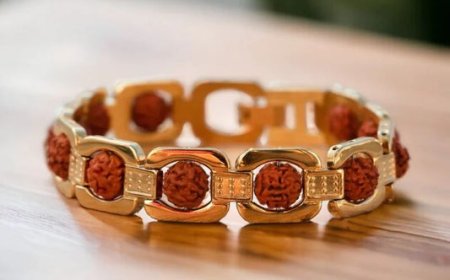“From Barter to Banknotes”: Unfolding the Legacy of Old Indian Currency Notes
Discover the fascinating history of old Indian currency notes, their value, and where to find genuine collectibles for sale online.

Indias history is rich not just in culture, but also in currency. The journey from ancient trade to printed banknotes tells a tale of colonial influence, royal decrees, and evolving economies. For collectors and enthusiasts alike, old Indian currency notes for sale represent more than paperthey are a glimpse into Indias storied past.
Whether youre an amateur hobbyist or a seasoned numismatist, this blog takes you through the legacy, types, and valuation of old Indian currency notes. You'll also find tips on starting your own collection and learn about some of the rarest pieces that are highly sought-after today.
?? 1. The Early Days: Currency Before Independence
Before India gained independence in 1947, the currency system was largely influenced by British colonial rule. The first formal paper currency was introduced in the 18th century by private banks like the Bank of Hindostan and the General Bank of Bengal and Bihar.
During British rule, notes were issued under the Reserve Bank of India Act, starting in 1935. These notes bore the portrait of King George VI and were widely circulated across British India. Collectors highly value these pre-independence notes for their design, rarity, and historical significance.
?? 2. Post-Independence Currency: New Era, New Identity
Once India became a republic, the currency designs changed dramatically. In 1949, the image of King George VI was replaced with the Lion Capital of Ashokamarking a new chapter for Indian currency.
Old Indian currency notes from the 1950s and 1960s often featured motifs of national pride, including dams, agriculture, and industrialization. These notes reflected India's push toward progress while staying rooted in tradition. Today, these pieces are popular among collectors seeking to preserve Indias post-colonial narrative.
? 3. Rare Gems: Notes That Define Collectibility
Certain notes hold immense value due to printing errors, limited editions, or discontinued denominations. Some of the most coveted ones include:
-
Rs. 1 notes with signature variations
-
The Rs. 10 note issued in the 1940s with serial number misprints
-
Recalled Rs. 1,000 notes from the 1970s
Collectors prize these rare variants, not just for their aesthetic, but also for the unique stories they tell. The fewer the notes in circulation, the more valuable they become.
? 4. Design Evolution: Art in Currency
Old Indian currency notes are a canvas of intricate designs and cultural motifs. Over the decades, Indias banknotes have featured everything from elephants and rhinos to iconic monuments and leaders.
Notes from the 1980s and 1990s, such as the Elephant Series, are especially popular for their artistic value. Each note is carefully crafted with security features and watermarks, making them both a visual delight and a technical marvel.
? 5. Demonetization: When Notes Turned to Dust or Gold
India has undergone multiple demonetization events, with the most notable one being in 2016. However, earlier demonetizations in 1946 and 1978 also rendered large denomination notes obsolete overnight.
Surprisingly, these discontinued notes didnt lose all their valueat least not for collectors. Notes that are no longer legal tender often rise in demand, as they become harder to find. This transformation from currency to collectible is a unique trait of the numismatic world.
? 6. Authentication Tips: Spotting the Real from the Replica
As the value of old notes increases, so does the risk of encountering counterfeits. Here are a few pointers to authenticate old Indian currency notes:
-
Watermark Inspection: Genuine notes feature embedded watermarks that are hard to replicate.
-
Paper Quality: Older notes were made using special fiber paper, which has a distinct feel and durability.
-
Serial Numbers: Look for sequential or unique serial numbers, which increase value and authenticity.
Always buy from reputed dealers or platforms to ensure the legitimacy of your collectibles.
? 7. Building Your Collection: Where and How to Start
Getting started with old currency collection doesnt have to be expensive or overwhelming. First, decide on a themedo you want to collect based on time period, denomination, or printing errors?
Next, explore online platforms like auctions, forums, and marketplaces offering old Indian currency notes for sale. Ensure the sellers are verified, and look for detailed product descriptions, close-up images, and refund policies.
? 8. Legal Considerations: What You Can and Cannot Collect
In India, it is legal to collect most old currency notes, but certain restrictions apply. For instance, notes bearing the image of current leaders or that resemble current legal tender cant be sold or publicly displayed.
Always stay updated with RBI guidelines or consult a professional collector to make sure your hobby remains on the right side of the law. Additionally, export and import of old Indian currency is restricted, so international trades should be handled with caution.
? 9. The Investment Angle: Is It Worth It?
Old currency isnt just a passionit can also be a profitable investment. Over time, the value of rare notes appreciates significantly, especially if they are well-preserved and come with authentication.
Some collectors buy with the intent to sell at numismatic exhibitions or auctions. Others view their collection as a legacy to pass down. Regardless of your goal, the emotional and monetary value of a good collection often surpasses expectations.
As you explore and grow your collection, you might also be interested in learning about the most expensive old coins that have fetched impressive prices in auctions worldwide.




























